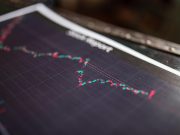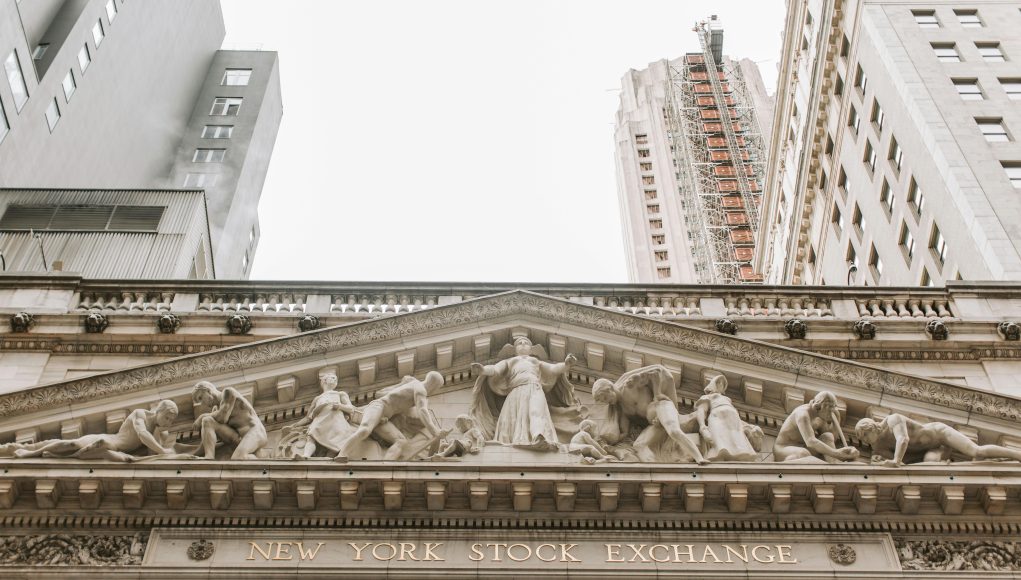
(Singapore, 05.08.2025)In recent months, a powerful surge has propelled the stock market to unprecedented heights, driven by a wave of optimism and the promise of a technology-fueled future. However, this seemingly unstoppable rally is now facing a pivotal moment. A growing chorus of financial experts from some of Wall Street’s most influential firms is sounding a note of caution, warning that a market correction is not only possible but likely. This sentiment, however, is not a signal to abandon the market, but rather a strategic warning to prepare for a “buy the dip” opportunity.
The Perfect Storm
Wall Street’s concerns stem from a confluence of factors, creating a perfect storm that many believe will lead to a near-term drop in the market. The first major concern is the soaring valuation of stocks. The S&P 500 has been on a tear, and its 14-day relative strength index recently topped 76—a level not seen since July 2024. Market technicians view a reading above 70 as a sign of overheating, suggesting that the market’s rapid ascent may not be sustainable in the short term.
Further fueling these fears is a weakening economic outlook. Recent data has painted a worrying picture of the US economy, showing an uptick in inflation alongside a slowdown in job growth and consumer spending. This economic souring is colliding with the market’s high valuations, creating a scenario where a correction becomes more probable. Morgan Stanley strategist Mike Wilson, for example, anticipates a correction of up to 10% this quarter, arguing that new tariffs will likely hit consumers and corporate balance sheets. Evercore’s Julian Emanuel is even more bearish, expecting a more substantial decline of up to 15%.
Adding to the pressure is the historical seasonality of the market. The months of August and September are traditionally the weakest time of the year for stocks. Over the past three decades, the S&P 500 has lost an average of 0.7% in each of these months, a stark contrast to the average 1.1% gain seen in other months. This historical trend, combined with current economic uncertainties, suggests that the market is entering a period of heightened risk.
Interestingly, market sentiment among traders is already reflecting this fear. The cost of hedging against a significant market decline has become increasingly expensive. The price of contracts protecting against a 10% drop in the SPDR S&P 500 ETF Trust (SPY) over the next two months, relative to the cost of contracts hedging against a similar rally, is hovering at levels not seen since the regional banking crisis in May 2023. This shows that while the market has been climbing, many investors are proactively bracing for a downturn.
The Bullish Caveat: “Buy the Dip”
While the warnings of a market correction are widespread, they come with a crucial and powerful caveat: buy the dip. The overarching message from these Wall Street experts is that this anticipated pullback is not a sign of a looming bear market, but rather a healthy and necessary correction within a long-term bull market.
Evercore’s Julian Emanuel, despite his prediction of a 15% decline, emphasizes that the long-term bull market is still intact. He advises clients to remain invested, particularly in companies poised to capitalize on the artificial intelligence boom, which continues to be a major driver of growth and innovation.
Similarly, Deutsche Bank’s Parag Thatte points out that small drawdowns are a normal part of the market cycle. Historically, the S&P 500 experiences pullbacks of around 3% every few months and larger ones of 5% or more every three to four months. This anticipated correction, therefore, is simply a return to historical norms after an unusually prolonged rally. Morgan Stanley’s Mike Wilson echoes this sentiment, stating, “We’re buyers of dips.”
This strategy of “buying the dip” is already visible in the market. Following a selloff last Friday, both the S&P 500 and the Nasdaq 100 Index surged more than 1% on Monday. This immediate rebound was fueled by investor optimism that the Federal Reserve would soon cut interest rates. This is a clear indication that traders are heeding the advice to view a downturn as a buying opportunity, rather than a signal to panic.
The Fed, Tariffs, and a Shifting Global Landscape
The Federal Reserve’s monetary policy is a central factor in the current market dynamics. A weak jobs report last Friday has significantly increased expectations for a rate cut at the Fed’s next meeting in September.
Traders are now pricing in a nearly 95% chance of a rate cut, a dramatic increase from the 80% chance implied just before the jobs data was released. San Francisco Fed President Mary Daly recently noted that the time for rate cuts is nearing, citing a softening job market and a lack of persistent tariff-driven inflation. Lower interest rates are a powerful stimulant for the market, making corporate borrowing cheaper and boosting the appeal of equities.
This optimism around a Fed rate cut is also providing a significant boost to other assets, particularly gold. The precious metal, which does not pay interest, typically benefits from lower rates, and traders are now pricing in a 98% chance of a Fed rate cut. This, combined with ongoing trade wars, geopolitical conflicts, and significant central-bank buying, has pushed gold to nearly $3,375 an ounce, with some analysts forecasting it could reach $4,000 by the end of next year.
The perceived threats to the Fed’s independence, with President Donald Trump poised to appoint a successor aligned with his rate-cutting agenda, are also bolstering gold’s appeal as a safe-haven asset.
Meanwhile, the global trade landscape remains fraught with uncertainty. The European Union is awaiting executive actions from President Trump regarding tariffs on cars and other industrial goods, while Switzerland is grappling with new 39% levies on its exports to the US.
In a new development, Trump has also threatened to “substantially” raise tariffs on Indian exports in retaliation for New Delhi’s purchases of Russian oil. These ongoing trade disputes create a volatile environment and could periodically spook the market, as warned by Aidan Yao, senior investment strategist at Amundi Investment Institute. He describes the current situation as a “very volatile ceasefire” rather than a credible end to the trade war.
Ultimately, the market finds itself at a crossroads. While the short-term risks of a correction are real and well-documented by Wall Street’s leading strategists, the underlying bullish sentiment remains strong. The potential for a Fed rate cut, coupled with the immense growth potential of sectors like artificial intelligence, provides a solid foundation for the long-term bull market.
In a nutshell, the message from Wall Street is to prepare for a coming dip, but see it not as a cause for panic, but as a strategic chance to buy into a powerful and sustained upward trend.





































